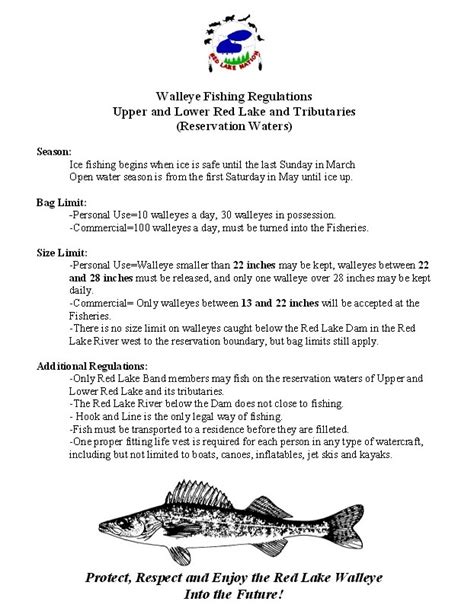Walleye Size Regulations: Protecting Our Waters
Walleye, with their prized flaky white meat and exciting fight, are a coveted catch for anglers across North America. However, the sustainability of these populations depends heavily on responsible fishing practices, and a crucial component of that is adhering to walleye size regulations. These regulations, while sometimes frustrating for anglers, are vital for maintaining healthy walleye populations for future generations. This article will delve into the importance of walleye size regulations, exploring their purpose, variations across regions, and the broader implications for conservation.
Why Are Walleye Size Regulations Necessary?
Walleye populations, like many fish species, are susceptible to overfishing. Removing too many large, mature fish before they have a chance to reproduce significantly impacts the overall population size. Mature walleyes are crucial because they contribute the most to breeding success. Size regulations help protect these breeding adults, ensuring a continuous supply of offspring to sustain the population.
Smaller walleyes, while still contributing to the gene pool, haven't reached their full reproductive potential. By allowing smaller fish to grow larger, size limits increase the number of offspring produced in each spawning season. This simple yet effective measure helps maintain a healthy balance within the ecosystem.
What Are the Common Size and Bag Limits for Walleye?
Walleye size and bag limits are not uniform across all regions. They vary considerably depending on the specific body of water, the state or province, and the time of year. Regulations are often designed based on scientific assessments of local walleye populations. Some common regulations include:
-
Minimum Size Limits: Many jurisdictions implement minimum size limits, often ranging from 14 to 18 inches, meaning that any walleye caught smaller than this size must be released immediately. This protects younger fish and allows them to mature and reproduce.
-
Maximum Size Limits: Some regions also have maximum size limits, designed to protect trophy-sized fish that are especially important for breeding. These limits often require anglers to release any walleye exceeding a specific length.
-
Bag Limits: Bag limits restrict the number of walleye an angler can keep in a given day. This further controls the overall harvest and prevents overfishing.
It's crucial to check local regulations before you go fishing. These regulations are readily available online through the relevant state or provincial wildlife agency websites. Failing to comply with these rules can result in significant fines.
How Do Size and Bag Limits Affect the Ecosystem?
Maintaining healthy walleye populations has a cascading positive effect on the broader aquatic ecosystem. Walleye are important predators, playing a role in controlling populations of smaller fish. A healthy walleye population contributes to a balanced and thriving aquatic environment.
Conversely, overfishing can have devastating consequences. A depleted walleye population can disrupt the food web, leading to imbalances that can affect other species and the overall health of the ecosystem.
What About Slot Limits?
What are Slot Limits for Walleye?
Slot limits are a more nuanced approach to size regulations. A slot limit designates a range of sizes that must be released. For example, a slot limit might require anglers to release any walleye between 15 and 20 inches, while allowing them to keep fish smaller than 15 inches or larger than 20 inches. This approach protects the most reproductively active fish while still allowing anglers to harvest some fish.
How Can I Help Protect Walleye Populations?
Beyond adhering to size and bag limits, anglers can contribute to walleye conservation in several ways:
-
Practice Catch and Release: Whenever possible, practice catch and release, especially with larger walleye. Handle fish carefully to minimize stress and ensure their survival.
-
Use Barbless Hooks: Barbless hooks make it easier to remove hooks quickly and gently, reducing the risk of injury to the fish.
-
Educate Others: Spread awareness about the importance of walleye conservation and proper fishing techniques among fellow anglers.
By understanding and respecting walleye size regulations and employing responsible fishing practices, we can help ensure the continued health and abundance of these magnificent fish for generations to come. Remember to always check the specific regulations for your fishing location before heading out.

